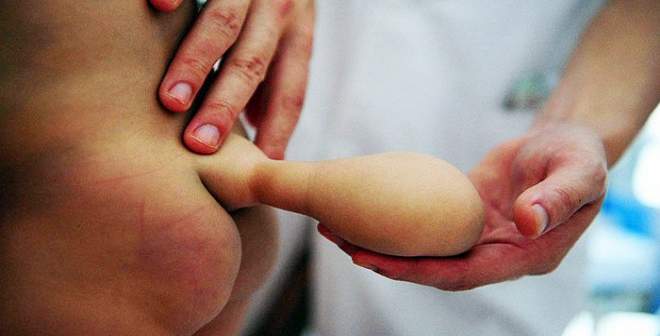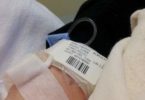What's in this article?
What is Spina Bifida?
Spina bifida is part of a group of birth defects called neural tube defects. The neural tube is the embryonic structure that eventually develops into the baby’s brain and spinal cord and the tissues that enclose them.
Normally, the neural tube forms early in the pregnancy and closes by the 28th day after conception. In babies with spina bifida, a portion of the neural tube fails to develop or close properly, causing defects in the spinal cord and in the bones of the spine.
Spina bifida occurs in various forms of severity. When treatment for spina bifida is necessary, it’s done surgically, although such treatment doesn’t always completely resolve the problem.
Causes of Spina Bifida
Low levels of the vitamin folic acid during pregnancy are linked to spina bifida. Folic acid plays a large role in cell growth and development, as well as tissue formation. Not having enough folic acid in the diet before and during early pregnancy can increase a woman’s risk of spina bifida and other neural tube defects.
The causes of spina bifida in pregnancies where mothers took prenatal vitamins and got enough folic acid are largely unknown. Some evidence suggests that genes may play a role, but most babies born with spina bifida have no family history of the condition.
A high fever during pregnancy may increase a woman’s chances of having a baby with spina bifida. Women with epilepsy who have taken the drug valproic acid to control seizures also are at an increased risk of having a baby with spina bifida.
Symptoms of Spina Bifida
Your child’s symptoms will depend on how severe the defect is. Most children with the mild form of spina bifida don’t have any problems from it.
In many cases, children with meningocele don’t have any symptoms.
Children with the most severe form of spina bifida often have spine and brain issues that cause serious problems. They may have:
- Little or no feeling in their legs, feet, or arms, so they may not be able to move those parts of the body.
- Bladder or bowel problems, such as leaking urine or having a hard time passing stools.
- Fluid buildup in the brain (hydrocephalus). Even when it is treated, this may cause seizures, learning problems, or vision problems.
- A curve in their spine, such as scoliosis.
Different Types of Spina Bifida
There are four types of spina bifida: occulta, closed neural tube defects, meningocele, and myelomeningocele.
Occulta is the mildest and most common form in which one or more vertebrae are malformed. The name “occulta,” which means “hidden,” indicates that a layer of skin covers the malformation, or opening in the vertebrae. This form of spina bifida, present in 10-20 percent of the general population, rarely causes disability or symptoms.
Closed neural tube defects make up the second type of spina bifida. This form consists of a diverse group of defects in which the spinal cord is marked by malformations of fat, bone, or meninges. In most instances there are few or no symptoms; in others the malformation causes incomplete paralysis with urinary and bowel dysfunction.
Meningocele, spinal fluid and meninges protrude through an abnormal vertebral opening; the malformation contains no neural elements and may or may not be covered by a layer of skin. Some individuals with meningocele may have few or no symptoms while others may experience such symptoms as complete paralysis with bladder and bowel dysfunction.
Myelomeningocele, the fourth form, is the most severe and occurs when the spinal cord/neural elements are exposed through the opening in the spine, resulting in partial or complete paralysis of the parts of the body below the spinal opening. The impairment may be so severe that the affected individual is unable to walk and may have bladder and bowel dysfunction.
How Spina Bifida is Treated
A number of different treatments can be used to treat symptoms or conditions associated with spina bifida.
These include:
- surgery soon after birth to close the opening in the spine and treat hydrocephalus
- therapies to help make day-to-day life easier and improve independence, such as physiotherapy and occupational therapy
- assistive devices and mobility aids, such as a manual or electric wheelchair, or walking aids
- treatments for bowel and urinary problems, such as medication, draining urine from the bladder with a tube (catheter), anal irrigation systems and surgery
With appropriate treatment and support, it’s likely that children with spina bifida will survive well into adulthood. It can be a challenging condition to live with, but many adults with spina bifida are able to lead independent and fulfilling lives.







